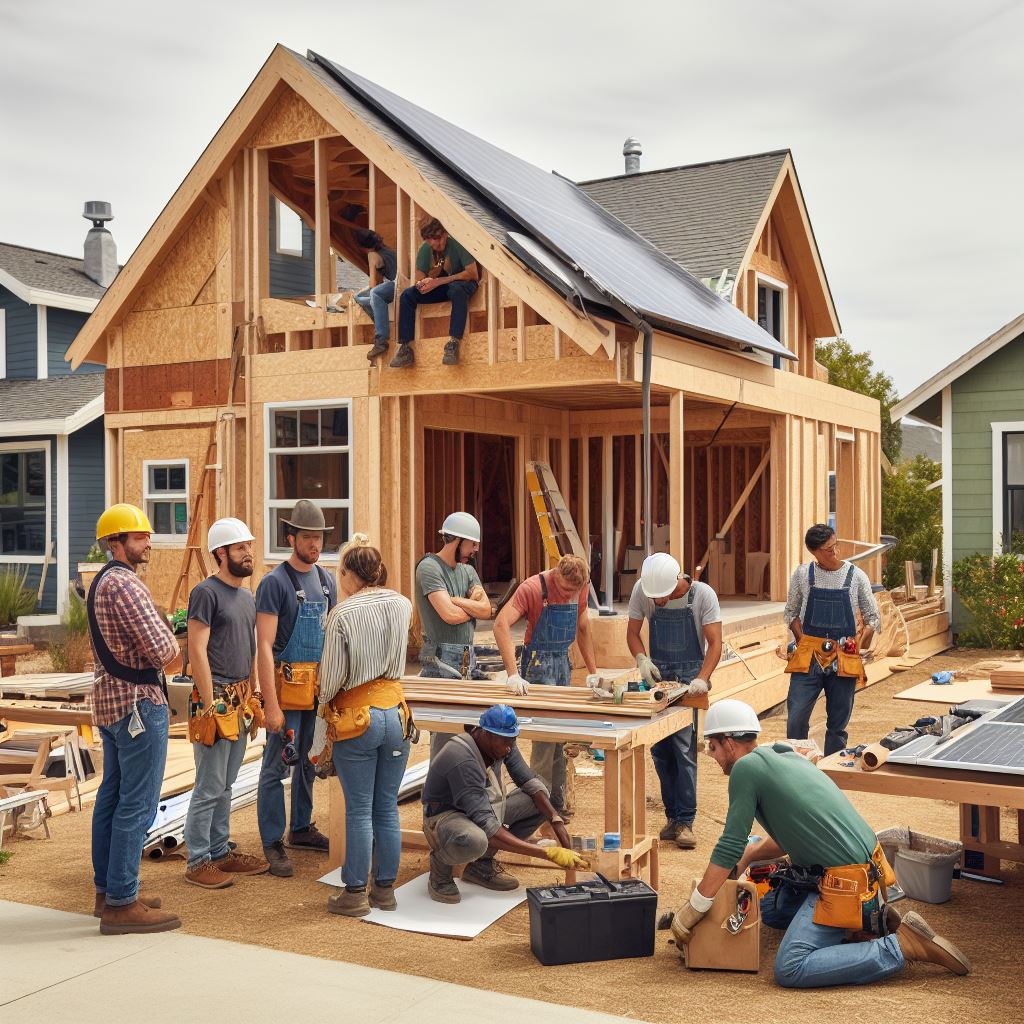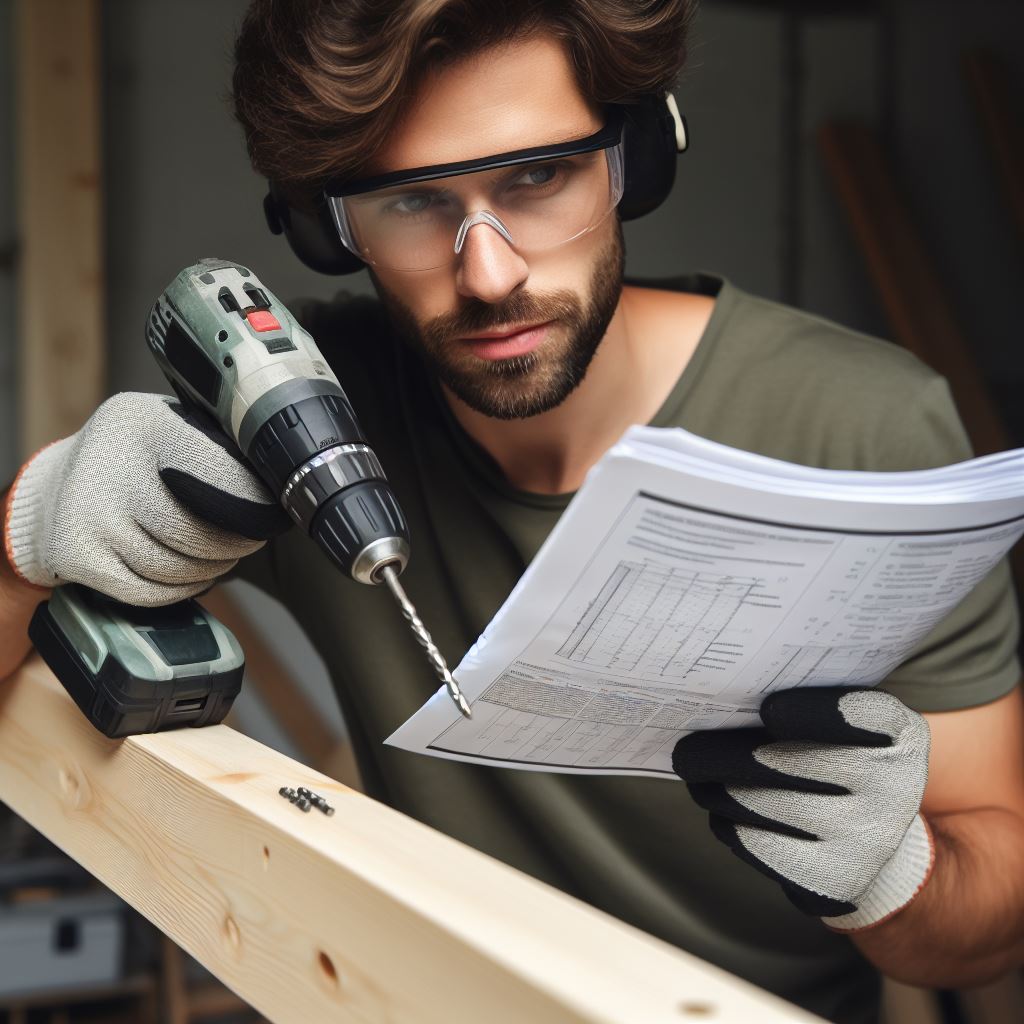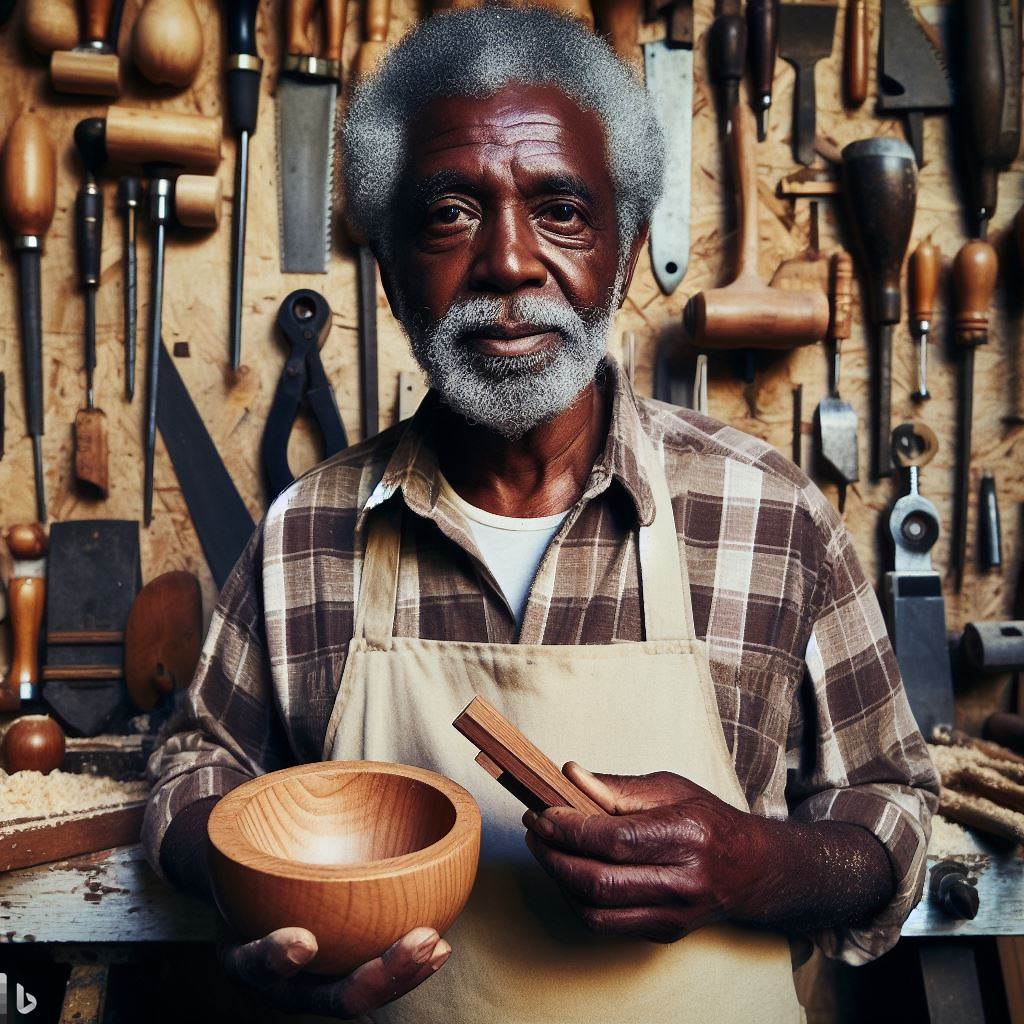Introduction
Housing trends in the USA are ever-evolving, mirroring homeowners’ preferences and needs. Carpentry is pivotal in the housing industry, showcasing skilled craftsmanship in constructing and renovating homes.
In this chapter, we explore the impact of housing trends on carpentry in the USA, analyzing how evolving demands and styles shape the carpentry profession.
As homeowners seek sustainable and energy-efficient living, carpenters are incorporating eco-friendly materials and techniques.
Open floor plans have gained popularity, prompting carpenters to create versatile and visually appealing spaces.
Modern carpentry embraces technological advancements, with smart home integration, creating a seamless living experience.
Rustic and industrial designs are in vogue, requiring carpenters to master the art of blending old-world charm with contemporary aesthetics.
The tiny house movement has influenced carpenters to maximize space utilization, creating functional yet compact living spaces.
In response to the pandemic, home offices have become essential, prompting carpenters to design ergonomic workspaces.
The use of reclaimed wood is on the rise, contributing to both sustainability and a unique, rustic appeal.
Carpenters now have to adapt to these evolving demands, staying up-to-date with the latest design trends.
In essence, housing trends significantly impact the carpentry profession, pushing carpenters to innovate and create homes that align with the ever-changing preferences of homeowners.
Historical overview of housing trends
Discussion of traditional housing styles and construction methods
- Early American settlers relied on timber framing techniques for their homes.
- Colonial architecture featured symmetrical designs and clapboard siding.
- Craftsmen used hand tools such as saws, chisels, and hammers to build houses.
- Pioneers in the Western frontier constructed log cabins using notched corner joints.
- Victorian homes showcased ornate woodwork, decorative trim, and intricate detailing.
Introduction of modern housing trends and techniques
- The Industrial Revolution led to advancements in carpentry with the use of power tools.
- Balloon framing became popular in the late 19th century, utilizing lightweight lumber.
- Arts and Crafts movement promoted handcrafted details and natural materials in architecture.
- Post-World War II, suburbanization brought about mass-produced housing and tract homes.
- Sustainable building practices gained momentum, emphasizing energy efficiency and eco-friendly materials.
Transition of carpentry practices over time
- Carpenters adapted their skills from traditional joinery to modern framing techniques.
- The introduction of new materials like plywood and engineered wood revolutionized construction.
- Power tools, such as circular saws and nail guns, increased productivity and efficiency.
- Carpenters diversified their expertise to accommodate various architectural styles and building methods.
- Technology and computer-aided design (CAD) have further transformed carpentry practices in the 21st century.
Housing trends have greatly influenced the evolution of carpentry in the United States.
From the early days of timber framing and log cabins to the modern era of sustainable construction.
Carpenters have adapted their skills, techniques, and tools to meet the changing demands of the housing industry.
Read: Safety Protocols: Best Practices in American Carpentry
Current housing trends in the USA
Increased focus on sustainable and eco-friendly construction
One of the significant housing trends in the USA is the shift towards sustainable and eco-friendly construction practices.
Developers, builders, and homeowners are increasingly recognizing the importance of reducing their environmental impact.
And creating homes that are energy-efficient, using recycled materials, and implementing sustainable design principles.
Sustainable construction methods focus on minimizing waste production, conserving resources, and utilizing renewable energy sources.
This trend has a direct impact on carpentry as carpenters are responsible for using sustainable materials, such as bamboo or reclaimed wood.
Transform Your Career Today
Unlock a personalized career strategy that drives real results. Get tailored advice and a roadmap designed just for you.
Start NowAnd implementing energy-efficient features like installing energy-efficient windows and using insulation wisely to reduce energy consumption.
Rise in popularity of modular and prefabricated homes
Modular and prefabricated homes have gained immense popularity in recent years due to their cost-effective, efficient, and customizable nature.
These homes are pre-built in a factory setting and then transported to the site for assembly.
Carpentry plays a vital role in the construction of modular and prefabricated homes.
Carpenters are responsible for installing structural components, such as walls, roof trusses, and flooring, as well as cabinetry and other finishing details.
Their expertise is crucial in ensuring precise and accurate assembly of these homes.
Growth of tiny homes and minimalist living
Another housing trend that has emerged is the growth of tiny homes and minimalist living.
With a focus on simplicity and reducing the ecological footprint, many individuals or families are opting for smaller, more affordable and sustainable living spaces.
For carpentry, this trend presents a challenge in effectively utilizing limited space.
Carpenters often need to create custom storage solutions, multifunctional furniture, and innovative space-saving designs to maximize every square inch of the tiny home while maintaining functionality and aesthetics.
Emergence of smart homes and integrated technology
The emergence of smart homes and integrated technology has revolutionized the housing industry.
Homeowners now have the ability to control various aspects of their homes, such as lighting, temperature, security systems, and appliances, through their smartphones or voice-activated devices.
Carpenters must adapt to this trend by acquiring knowledge and skills related to home automation and integrated technology.
They may be involved in installing smart home systems, wiring electrical components, and ensuring seamless integration of technology into the carpentry framework.
Impact of changing architectural styles on carpentry requirements
The ever-evolving architectural styles influence the carpentry requirements in the housing industry.
From traditional to contemporary designs, each style has its unique characteristics and demands.
Carpenters need to stay updated with the latest architectural trends and adapt their skills accordingly.
They may have to master new techniques and materials to meet the demands of different architectural styles.
Whether it’s crafting intricate woodwork for Victorian homes or incorporating metal and glass elements in modern designs, carpenters play a crucial role in bringing architectural visions to life.
Showcase Your Business Today
Reach thousands of readers actively exploring professional services. Publish your business profile and grow your audience now.
Publish NowIn essence, various housing trends in the USA have a significant impact on carpentry.
From sustainable construction to modular homes, and from tiny homes to smart homes, carpenters need to adapt their skills, embrace new technologies.
And stay informed about changing architectural styles to thrive in the evolving housing industry.
Read: Emerging Tech: How Automation Impacts Carpentry in the US
Effects of housing trends on carpentry industry
Shift in required skills and knowledge for carpenters
The housing trends in the USA have caused a significant shift in the skills and knowledge required for carpenters.
Carpenters now need to be well-versed in modern construction techniques and materials, such as sustainable building practices and eco-friendly materials.
They must also be knowledgeable in computer-aided design (CAD) software, as many housing projects now rely on digital modeling and pre-fabrication.
The traditional skills and techniques that were once sufficient for carpentry work are no longer enough in today’s housing industry.
Carpenters need to continuously update their skills and knowledge to keep up with the evolving demands of the housing market.
Demand for specialized carpentry services to accommodate modern housing trends
The housing trends in the USA have given rise to a growing demand for specialized carpentry services.
Homeowners are increasingly looking for unique and customized designs that reflect their personal style and preferences.
This has created opportunities for carpenters with expertise in intricate woodwork, custom cabinetry, and ornamental detailing.
Additionally, the rise of sustainable housing trends has led to an increased demand for carpenters who can work with reclaimed wood and implement energy-efficient building practices.
The carpentry industry has responded by offering specialized services to cater to these new housing trends, creating more diverse job opportunities for skilled carpenters.
Impact of technology on carpentry tools and techniques
The advancement of technology has greatly impacted the tools and techniques used in carpentry.
Power tools and machinery have become more efficient, reducing the time and effort required for carpentry tasks.
CAD software has revolutionized the design process, allowing carpenters to create intricate and detailed plans before even picking up a tool.
Additionally, the use of 3D printers and CNC machines has opened up possibilities for precise and customized carpentry work.
However, while technology has improved efficiency, it has also created a need for carpenters to learn and adapt to new tools and techniques.
Older carpenters may need to update their skills to remain competitive in the industry.
Challenges and opportunities for carpenters in adapting to new trends
The changing housing trends present both challenges and opportunities for carpenters.
Adapting to new skills and techniques can be a challenge, especially for experienced carpenters who are used to traditional methods.
However, those who embrace change and invest in their professional development have the opportunity to thrive in the evolving carpentry industry.
Carpenters who specialize in niche areas, such as sustainable construction or custom design, have a unique selling point that sets them apart from the competition.
Additionally, the demand for carpentry services is expected to continue growing as the housing industry evolves, providing opportunities for skilled carpenters to secure steady work and potentially higher earnings.
Read: Green Carpentry: Sustainable Practices in the USA Today

Economic implications for carpentry professionals
Influence of housing trends on job opportunities for carpenters
- Housing trends directly affect the demand for carpentry services.
- As housing construction increases, job opportunities for carpenters also increase.
- On the other hand, a decline in housing construction can result in fewer job opportunities for carpenters.
- Changing housing trends, such as a shift towards sustainable or eco-friendly homes, may create new job opportunities for carpenters with specialized skills in these areas.
Impact of market demand on wages and income potential
- When the demand for carpentry services is high, carpenters can command higher wages.
- On the contrary, when the market demand for carpenters is low, wages may be lower.
- Carpenters who can offer unique or specialized services may have a higher income potential.
- Being able to adapt to changing market demands and offer in-demand services can lead to higher earnings.
Advantages and disadvantages of diversifying carpentry services based on housing trends
- Diversifying carpentry services based on housing trends can provide opportunities for growth and increased income.
- By staying updated on housing trends, carpenters can offer services that are in high demand.
- Specializing in specific areas of carpentry can lead to higher rates and a competitive edge.
- However, diversification can also require additional training and investment in new tools and equipment.
- There is also a risk of investing in a specific niche that may become less popular over time.
- Carpenters must carefully consider the costs and benefits of diversifying their services based on housing trends.
Read: Key Differences: Residential vs. Commercial Carpentry
Conclusion
Throughout this blog section, we have explored the impact of housing trends on carpentry in the USA. Let’s recap the main points discussed:
- The housing market is constantly evolving, and new trends shape the demand for carpentry services.
- The popularity of open concept layouts has led to increased demand for custom carpentry work.
- Green building practices and sustainable materials have become prominent in housing trends, requiring carpenters to adapt and learn new techniques.
- The shift towards smaller, more efficient homes has impacted the size and complexity of carpentry projects.
- Advancements in technology have both improved efficiency for carpenters and created new opportunities for innovation.
Based on these points, it is evident that housing trends significantly influence the carpentry industry in the USA.
Carpenters need to stay updated with these trends to effectively meet the demands of the market and remain competitive.
Therefore, it is crucial for carpenters to constantly improve their skills and knowledge to thrive in this ever-changing industry.
They must embrace new techniques, materials, and technologies to stay relevant.
Additionally, staying informed about emerging housing trends can provide carpenters with a competitive advantage and help them tailor their services to meet the evolving needs of customers.
The impact of housing trends on carpentry in the USA is profound.
Carpenters must adapt, learn, and innovate to succeed in this dynamic industry.
By staying updated with housing trends and continuously improving their skills, carpenters can position themselves as valuable assets in the ever-changing housing market.
[E-Books for Sale]
The Big Book of 500 High-Paying Jobs in America: Unlock Your Earning Potential
$19.99 • 500 High-Paying Jobs • 330 pages
Explore 500 high-paying jobs in America and learn how to boost your career, earn more, and achieve success!
See All 500 High-Paying Jobs of this E-Book
1001 Professions Without a Degree: High-Paying American Jobs You Can Start Now
$19.99 • 1001 Professions Without a Degree • 174 pages
Discover 1001 high-paying jobs without a degree! Unlock career tips, skills, and success strategies for just $19.99!




